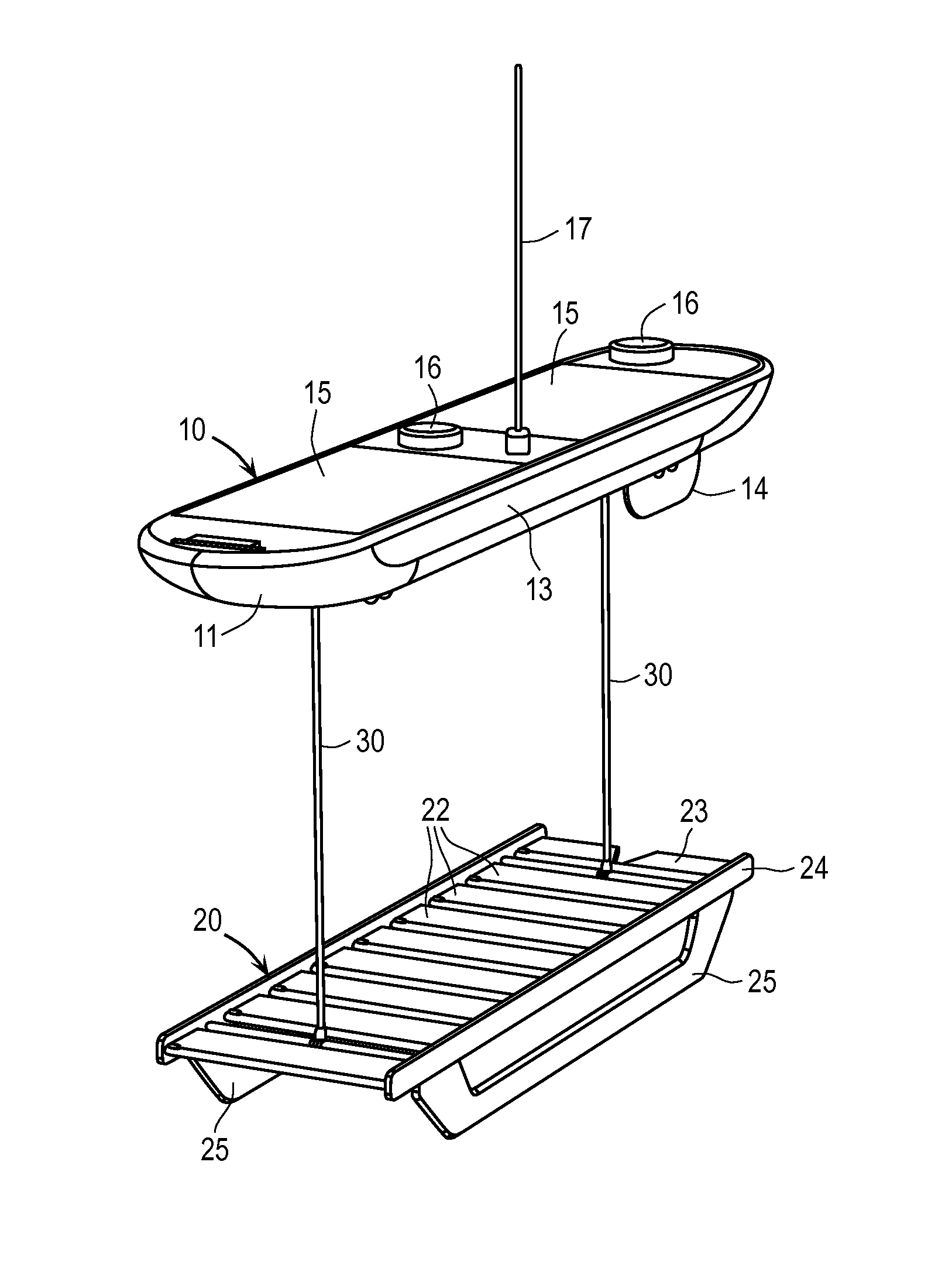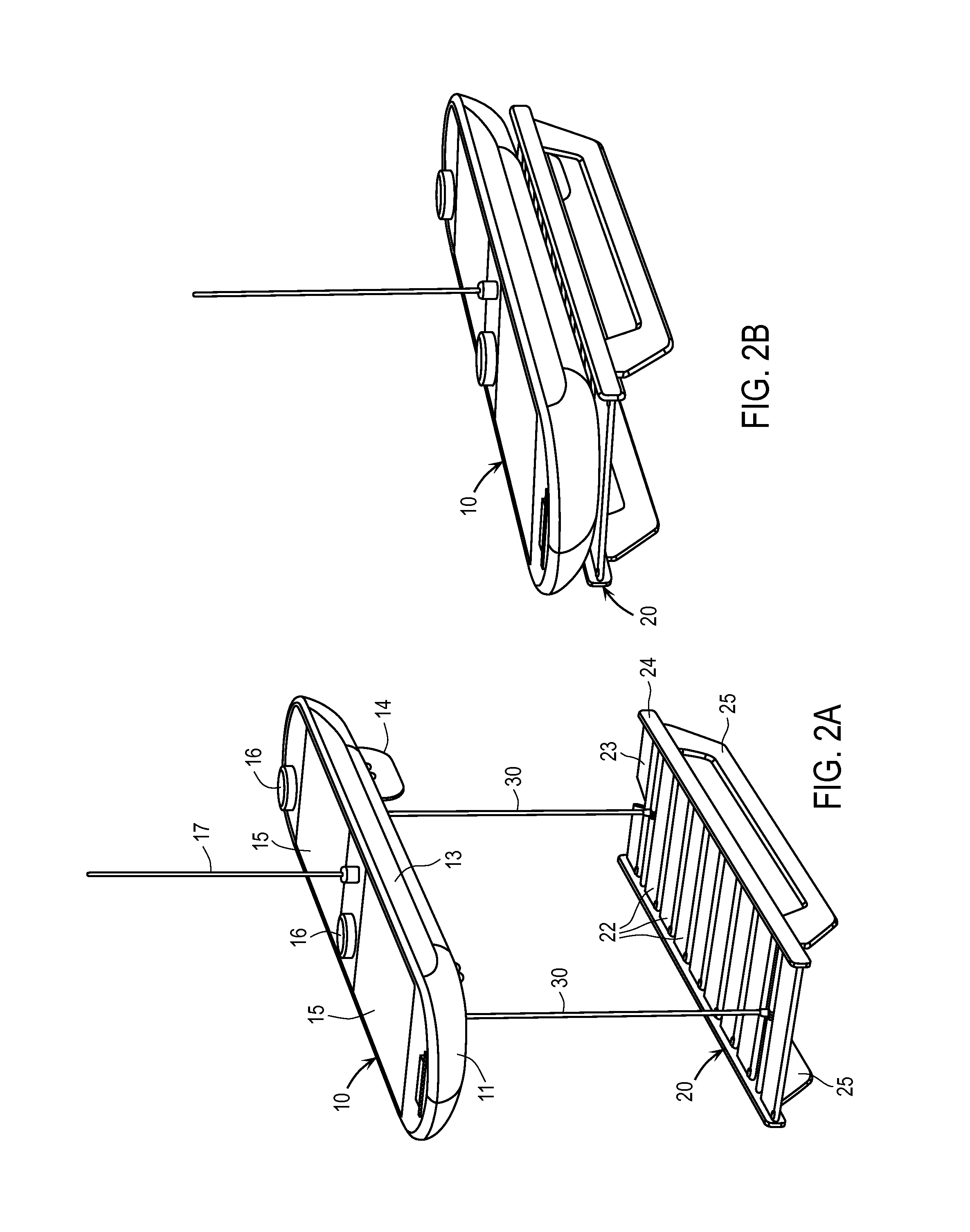Wave-powered devices configured for nesting
a technology of wave power and device, applied in the direction of marine propulsion, vessel construction, instruments, etc., can solve the problems of difficult storage, transportation, recovery, and storage, and achieve the effect of reducing resistance to upward motion, and facilitating storage of tether
- Summary
- Abstract
- Description
- Claims
- Application Information
AI Technical Summary
Benefits of technology
Problems solved by technology
Method used
Image
Examples
Embodiment Construction
Overview
[0070]FIG. 1 is a side view showing three images of a wave-powered water vehicle. The vehicle comprises a “float”10 resting on the water surface, and a “swimmer” or “glider”20 hanging below, suspended by a tether 30. The float 10 comprises a displacement hull 11 and a fixed keel fin 12. The swimmer comprises a rudder 21 for steering and “wings” or “fins”22 connected to a central beam of the rack 23 so as to permit rotation of the wings around a transverse axis within a constrained range, and provide propulsion.
[0071]In still water (shown in the leftmost panel), the submerged swimmer 20 hangs level by way of the tether 30 directly below the float 10. As a wave lifts the float 10 (middle panel), an upwards force is generated on the tether 30, pulling swimmer 20 upwards through the water. This causers the wings 22 of the swimmer to rotate about a transverse axis were the wings are connected to the rack 23, and assume a downwards sloping position. As the water is forced downward...
PUM
 Login to View More
Login to View More Abstract
Description
Claims
Application Information
 Login to View More
Login to View More - R&D
- Intellectual Property
- Life Sciences
- Materials
- Tech Scout
- Unparalleled Data Quality
- Higher Quality Content
- 60% Fewer Hallucinations
Browse by: Latest US Patents, China's latest patents, Technical Efficacy Thesaurus, Application Domain, Technology Topic, Popular Technical Reports.
© 2025 PatSnap. All rights reserved.Legal|Privacy policy|Modern Slavery Act Transparency Statement|Sitemap|About US| Contact US: help@patsnap.com



